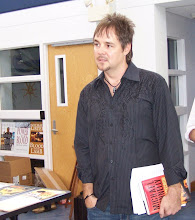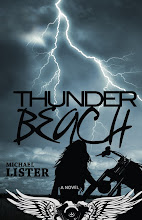
I’ve never cared much for kid movies. The ones I’ve endured, I’ve done so for my children, and even at a young age, they picked up on the fact that Dad spent a good deal of time in the lobby during the feature presentation.
Over the years, I’ve been subjected to Power Rangers, Pokemon, a pig named Babe, and dozens of Disney animated fairytales because they’re what my children wanted to watch, but this past weekend, with a little time on my hands following a book signing, I went to the theater right by myself and watched “Where the Wild Things Are.”
I didn’t do it for my children, but the child in me.
“Where the Wild Things Are” is an adaptation of Maurice Sendak’s classic children's story, where Max, a disobedient little boy sent to bed without his supper, creates his own world—a forest inhabited by ferocious wild creatures that crown Max as their ruler.
I’ve done a bit of adaptation—both of my own work and that of others—and know just how difficult it is to translate a work of art into another medium. There’s a real art to it—an art on brilliant and beautiful display in Spike Jonze’s and Dave Eggars’ work here. They have taken the ten sentences of Sendak’s beloved book and created a psychologically sophisticated and emotionally resonate film.
With an economy of words and some wonderful images, the book allows us to project our own particular wildness into the story (like all good stories do), to use our imaginations to fill in the spaces, to cast ourselves in the role of Max or one of the monsters, but the film largely does this for us, fleshing out characters and relationships and events, leaving few narrative gaps.
Some say music sooths the savage beast, and it’s true, but Max shows that story is far more effective. With child-like abandon, he spins tales that mesmerize the monsters. In fact, the power of story is one of the most significant and profound themes of the film. The entire work is a story, of course, but then there’s the story Max overhears his mom telling on the telephone, the story he tells her later as he’s settling in for bed, and the story he tells himself—the one that is his entire adventure. Story allows us to safely explore our wild sides, it comforts and heals and helps us make sense of the world. Our imaginations really are the most wondrous and wild things of all.
Max discovers much during his wild adventure—experiencing the pain of separation, the grief of loss, the solitude of leadership—but nothing he learns is more important or profound than the fact that even (or especially) Wild Things need mothers. As king, Max realizes just how difficult it is to be a parent—and how lucky he is to have one. In fact, the only thing keeping Max from complete anarchy, from being as lost and as damaged as the Wild Things is his mom. With a loving mother, a little Wild Thing can be a caring leader. Without a positive maternal influence, Wild Things too quickly become monsters that smash and destroy. We, like Max, need a mom—and not just in personal, but in public life. Our country and the world would be better if our sexist, male-dominated culture would make room for Mother (Mother God, Mother Earth, Yin, a celebrated and appreciated public feminine presence) and wouldn’t attempt to force a type of masculinity on women in positions of authority and leadership.
The Wild Things in Max’s mind (actual facets of Max’s personality) continually do damage. There’s a good deal of destruction in the film—particularly by Max and Carol—and it comes from their inability to deal with the strong emotions they experience. In Max and his Wild Things, we finally have a kid in film who is fully formed—wild and unpredictable, resilient and vulnerable, wild, yet ultimately domesticated.
Where are the Wild Things? Inside us as much as Max, and, like Max, we need to let them out occasionally so they can run and roar. Sure, this can be done literally—plenty of people out there howling at the moon every night—but there are endless ways to take a walk on the wild side including and especially art, and you could do far worse than reading or seeing “Where The Wild Things Are.” Figurative destruction is almost always better than actual, but a little wildness and even demolition all along is better than the catastrophic kind that inevitably explodes out of repression. What I’m saying is there’s a beast beneath our breast, and we need to let it out to breathe occasionally. So now, let the wild rumpus start.












1 comment:
Hi Michael,
I've recently found your blog by searching for a good review on "The Eternal Sunshine of the Spotless Mind". I could not help but read some other posts.
You are writing the blog I would like to have written myself. I would have been very proud of it and now, I'm glad I finally found it. Thank you.
Post a Comment